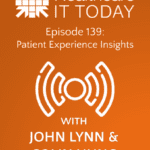The following is a guest article by Dr. Ed Cladera, Medical Director at AristaMD
We’re amid a massive provider shortage, and it’s only getting worse. According to data from the Association of American Medical Colleges, the U.S. is on track to face a shortage of up to 124,000 physicians by 2034. As a result of being unable to access care, patients are pushing off routine health services. Neglected care comes with more complications down the line.
Studies have shown that preventative care decreases the incidence of disease and patient mortality, resulting in better care outcomes. Preventive medicine proactively identifies and treats acute ailments before they develop into severe or chronic conditions. By addressing health problems before they require emergency intervention, both patients and the health system save money and see better outcomes.
Value-based care makes care more affordable for patients while rewarding clinicians for improved care, and the industry recognizes the value. The Centers for Medicare & Medicaid Services has expanded Medicare Advantage through 2023 to make the shift, and digital health tools are crucial for support.
There’s a reason for the famous saying “an ounce of prevention is worth a pound of cure.” To support this initiative, preventative medicine must be prioritized by all key stakeholders in the health care system.
Preventative Care Starts with Easy Access
Regardless of geographical location, accessing health care can be challenging, but patients in rural areas experience a particular disadvantage. It’s not feasible to expect a patient to drive over an hour to a provider, especially if this means finding transportation, childcare, and requesting time off work. Additionally, rural patients often receive coverage from Medicare and Medicaid, limiting the providers they can access from an affordability standpoint.
Health tech tools offer a massive opportunity to increase accessibility to preventative care for patients, which can even go beyond their primary care provider. Digital health solutions also can close gaps in specialty care access by enabling PCPs to treat specialty ailments in their clinic.
For example, if a patient is experiencing decreased range of motion in the hands, and has a family history of rheumatoid arthritis, then receiving guidance from a rheumatologist can help mitigate potential cardiovascular complications.
Yet, the average wait time for a rheumatologist is over one month, and a lot can change in the time a condition goes untreated. The solution is bringing specialty care to the PCP’s office, but whenever a patient has a condition they can’t immediately solve, the PCP has little option but to refer directly to a specialist.
Seamless referral management and physician-to-physician consultations – or eConsults – enable PCPs to quickly treat minor specialty concerns. Patients have an easier time getting the treatment they need, and specialists can keep their patient lists to those who truly need to see them.
Improving Outcomes, Decreasing Cost
In 2021, the U.S. spent nearly $4.3 trillion on healthcare, and one-quarter of that spending went toward hospital care. What’s more, the U.S. has the highest rate of avoidable deaths compared to counterpart countries. Avoidable emergency health intervention is the antithesis of value-based care. Even without insurance, a trip to a primary care office is significantly less than an emergency room visit.
Strained for resources, hospitals need to reduce the volume of preventative visits. Unnecessary emergency room visits caused by low health system literacy cost the system at least $47 billion annually.
Cutting these costs starts outside the hospital. If a care plan can be provided via a digital platform, that’s the first place to begin. Tools like eConsults can eliminate the need to wait months for a specialty care plan. Often, when patients are left waiting for a specialty provider’s insights, their condition can worsen. By the time they’re seen, the patient may need expensive and avoidable treatment. Or worse, the patient could end up in the emergency department with an emergency room bill before they even see their provider. With the main goal of value-based care being improving patient outcomes and reducing costs, appropriate preventative care measures enable exactly that.
In fact, AristaMD, an eConsult and referral management platform, found this technology reduces specialist referrals by 70% and ED and hospital visits by 12%.
Encourage Patients to Seek Preventative Care
Studies have found that only 12% of the entire U.S. population is considered to have proficient health literacy skills, and unskilled patients are more likely to revisit the emergency room compared to their counterparts.
Not only is a visit to a primary care physician significantly cheaper than a trip to the local emergency department, patients have the opportunity to build a trusted relationship with their physician. With relationship building comes trust, and patients may be more inclined to follow the advice of a trusted provider.
Patients don’t want to navigate repetitive appointments. PCPs can avoid unnecessary follow-ups by timely completion of workups, lab tests, and talking to patients about the types of visits they should be doing for their age and demographic. This care strategy reduces the volume of visits, makes care more accessible, and drives down costs for the entire system.
Patients Aren’t the Only Beneficiaries
Despite obvious benefits, preventative care access is under attack: On March 30, 2023, a judge in the U.S. District Court in the Northern District of Texas issued a final judgment in a court case challenging the provision of the Affordable Care Act (ACA) that requires most private health plans to cover a range of preventive services without any cost-sharing for their enrollees.
If not overturned on appeal, this ruling will exacerbate the reluctance of patients to spend on preventive care. In the long run, decreasing access to preventive care services helps no one. Without it, preventable conditions become chronic, provider wait times get longer, and the U.S. will continue to spend trillions on health care. Preventative medicine is key to making the industry shift to a value-based care model.
 About Dr. Ed Cladera
About Dr. Ed Cladera
Ed Cladera, MD, is the Medical Director of AristaMD and currently practices Hospitalist Medicine as a board-certified Internal Medicine physician. Dr. Cladera received his M.D. degree at Michigan State University, College of Human Medicine, and completed his residency training at the University of Tennessee. Prior to his medical training, Dr. Cladera worked as a research scientist at Parke-Davis Pharmaceuticals, Department of Biochemistry, and Pfizer Global Research and Development, Cardiovascular Therapeutics, Department of Molecular Science and Technology. Ed Cladera brings his experience in clinical medicine to the forefront of telehealth with AristaMD.













